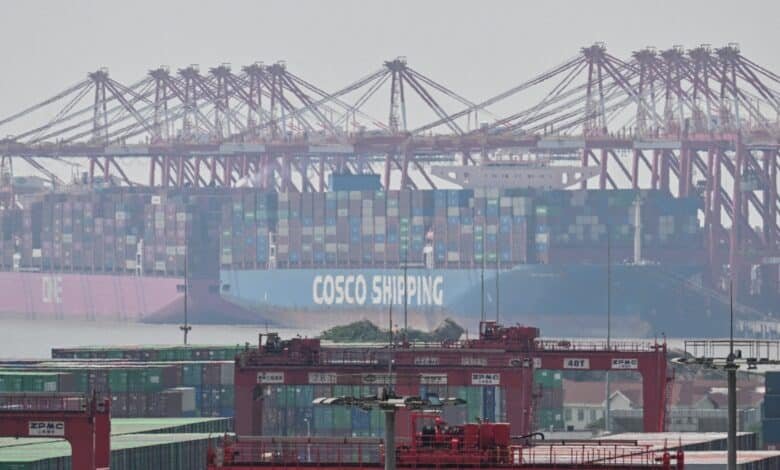American economic prospects have been reduced by the OECD while Trump’s prices have turned global growth upset

The United States’s economic growth forecasts were sharply reduced by the organization of economic cooperation and development, or OECD, which awarded the dark perspective in part to the prices issued by President Donald Trump.
The OECD expects the US economy to increase 1.6% in 2025, marking a substantial reduction in an expansion forecast of 2.2% in March.
The country’s economic growth will slow down more in 2026, said the OECD, reducing its forecasts for this year to 1.5%.
The prospects attenuated for the United States reflect an expected slowdown for the global economy, said the OECD, predicting that global economic growth increased from 3.4% in 2024 to 2.9% in 2025.
“The global economic prospects are weakening,” said the OECD in a statementPointing towards a range of factors which includes “substantial obstacles to trade” and “increased political uncertainty”.
The OECD also warned against a potential increase in American consumer prices, saying that inflation could approach 4% by the end of 2025. The inflation rate is currently 2.3%.
“Higher commercial costs, especially in countries increasing prices, will also increase inflation,” said the OECD.
OECD forecasts echo the concerns raised by Wall Street analysts and Federal President Jerome Powell on the possibility that President Donald Trump’s prices can cause what economists call “stagflation”, that is to say when inflation increases and the economy slows down.
An increasing set of large retailers has warned against the possible price increases, including Nike, Target, Walmart and Best Buy.
Consumer attitudes have embittered for four consecutive months as prices have settled, according to a survey by the University of Michigan.
Consumer expenditure, which represents about two -thirds of American economic activity, could weaken if buyers’ appetites decrease. In theory, a slowdown in expenses could hammer certain companies, which invites layoffs which in turn reduce consumer activity.

A COSCO shipping cargo is represented at the Yangshan deep water port near Shanghai in the Chinese province of Eastern Zhejiang on June 3, 2025.
Hector Retamal / AFP via Getty Images
“Global trade tensions make the feeling,” said the OECD.
The American prices remain above where they stood before the start of Trump’s second term, but a number of samples have decreased in recent weeks.
A commercial agreement between the United States and China last month reduced the prices of the Tat-tray between the two largest economies in the world and sparked a thrust on the stock market. In a few days, Wall Street companies have softened their forecasts from a recession.
The American agreement occurred weeks after the White House interrupted “reciprocal prices” large-scale on dozens of countries. Trump has also reduced sectoral prices targeting cars and returned tasks to certain goods from Mexico and Canada.
Trump’s steepest rates fell into the legal limbo last week, throwing uncertainty over a large part of the president’s signature economic policy.
For the moment, the key measures of the economy remain fairly strong.
The unemployment rate is at a historically low level and employment growth remains robust, although it has slowed down previous summits. In recent months, inflation has cooled, reaching its lowest level since 2021.





